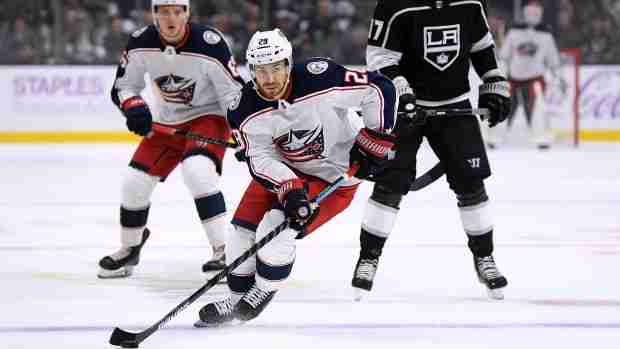The NHL has made an adjustment to the offside rule, a hot topic for years, and it will go into effect for the upcoming season.
The change to Rule 83.1 was announced Tuesday by the NHL and its Players’ Association as part of a return-to-play plan that also included COVID-19 protocols, travel rules and a schedule of critical dates.
Starting with the regular season, which begins January 13, a player’s skate will no longer need to be in contact with the blue line to be offside.
Under the old version of the rule, if a player’s skate was lifted off the ice but still within the opponent’s blue line, he was offside. Now, however, as long as a player’s skate has not yet crossed the “plane” before the puck crosses the front edge of the blue line, he is considered offside for the purposes of the offside rule.
WATCH | Rob Pizzo celebrates the return of hockey to the NHL:
It’s official: hockey is back, but it’ll be a little different this year.
A player is now offside only when both of his skates are completely above the front edge of the blue line involved in the play.
Last March, at the general managers’ meetings, the general managers voted to change the interpretation of the offside rule so that a player’s skating off the ice but over the blue line would be considered legal, much like the goal line in football. The league had considered the issue before, but it was adopted this time and received final approval from the board of governors.
In the meantime, a 54-page document has been released, covering a wide range of topics and outlining the health and safety rules that will be in place due to the COVID-19 pandemic. All teams will follow local regulations.
Each club will have a “Club Compliance Officer,” who will be responsible for monitoring and enforcing all COVID-19 protocols, including but not limited to monitoring daily symptom screening and temperature checks of players, as well as ensuring that players and all other club personnel wear masks properly and at all times, which includes coaches wearing masks during games.
All 31 teams will be in training camp on January 3, with the regular season set to begin 10 days later.
This season’s trade deadline is April 12 and the regular season ends May 8.
The Stanley Cup playoffs will begin on May 11, with the last possible day of postseason play set for July 9.
The Seattle Kraken expansion draft is scheduled for July 21, followed by the NHL draft on July 23.
Free agency for unrestricted and restricted players begins July 28.


